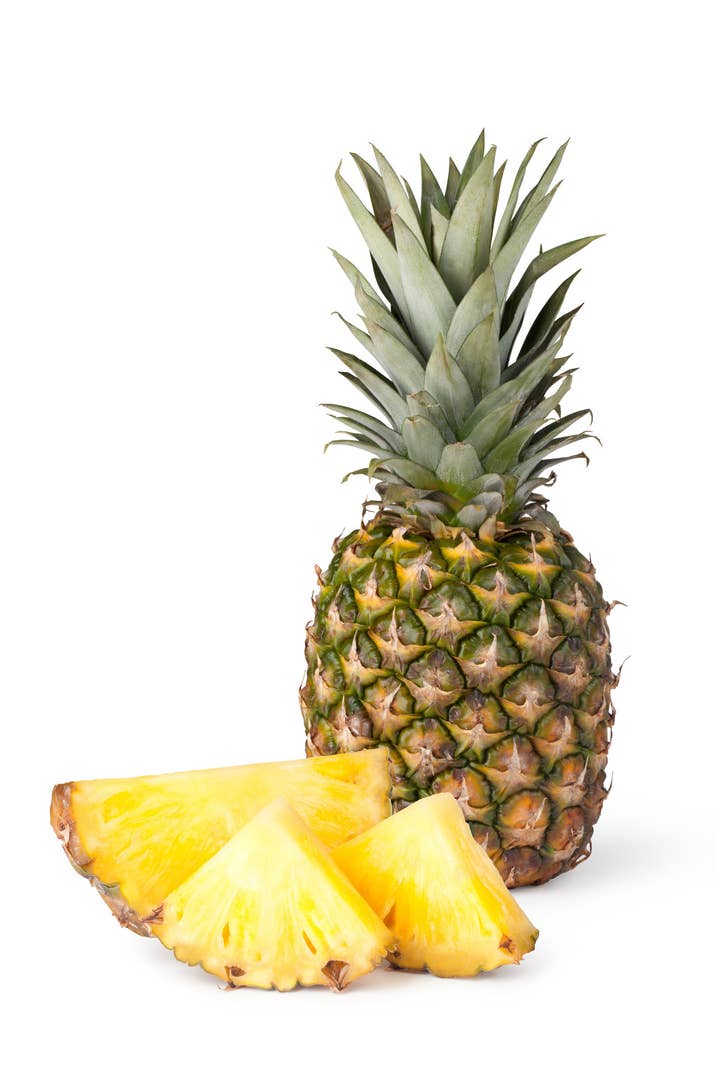Research scientists at the Texas A&M AgriLife
Research Center have discovered how the circadian clock functions in
pineapples. In the study, the researchers identified 1,398 transcription
factors, proteins that regulate expression of certain genes in pineapples. Half
of the transcription factors were discovered to exhibit diurnal gene expression
patterns, meaning that their gene expression is regulated by the time-of-day. The
researchers now hope to use this information to learn more about how efficiently
all plants, namely food plants, regulate water in their systems.
Pineapples function by using CAM photosynthesis, meaning that they only open their stomata during the nighttime to minimize water loss. Other plants, like rice, wheat, soybean and cotton, use C3 photosynthesis, which entails opening their stomata in the daytime. C3 photosynthesis is less efficient than CAM photosynthesis because more water evaporates from a plants’ stomata if they are open in the daytime than if they are open at night.
The researchers also found individual components of the circadian clock that regulates the CAM photosynthetic activity in pineapples. The next step for the scientists is to confirm the functions of the circadian oscillator, with hopes of understanding more about the genetic mechanisms of highly water-efficient CAM photosynthesis. The main goal of this research is to understand CAM photosynthesis and learn how to apply it to C3 plants, allowing them to use both methods of photosynthesis. If food plants can use the CAM pathway to photosynthesize, they will be able to adapt to changing climates more easily, and grow in locations uninhabitable to them today.
Since the human population on Earth is constantly growing, more food sources are always needed. If scientists can figure out how to give C3 plants the ability to also photosynthesize using the CAM pathway, the food plants will become more water efficient and will be able to grow in more places, giving humans a larger food supply. Many people go hungry throughout the world, so, I think that this is a great idea; by making food crops like wheat and rice more plentiful, there will be more food to go around, for humans and animals.
Pineapples function by using CAM photosynthesis, meaning that they only open their stomata during the nighttime to minimize water loss. Other plants, like rice, wheat, soybean and cotton, use C3 photosynthesis, which entails opening their stomata in the daytime. C3 photosynthesis is less efficient than CAM photosynthesis because more water evaporates from a plants’ stomata if they are open in the daytime than if they are open at night.
The researchers also found individual components of the circadian clock that regulates the CAM photosynthetic activity in pineapples. The next step for the scientists is to confirm the functions of the circadian oscillator, with hopes of understanding more about the genetic mechanisms of highly water-efficient CAM photosynthesis. The main goal of this research is to understand CAM photosynthesis and learn how to apply it to C3 plants, allowing them to use both methods of photosynthesis. If food plants can use the CAM pathway to photosynthesize, they will be able to adapt to changing climates more easily, and grow in locations uninhabitable to them today.
Since the human population on Earth is constantly growing, more food sources are always needed. If scientists can figure out how to give C3 plants the ability to also photosynthesize using the CAM pathway, the food plants will become more water efficient and will be able to grow in more places, giving humans a larger food supply. Many people go hungry throughout the world, so, I think that this is a great idea; by making food crops like wheat and rice more plentiful, there will be more food to go around, for humans and animals.
Article : Circadian clock discovery could help boost water efficiency in food plants
For more information on photosynthetic pathways click here

No comments:
Post a Comment